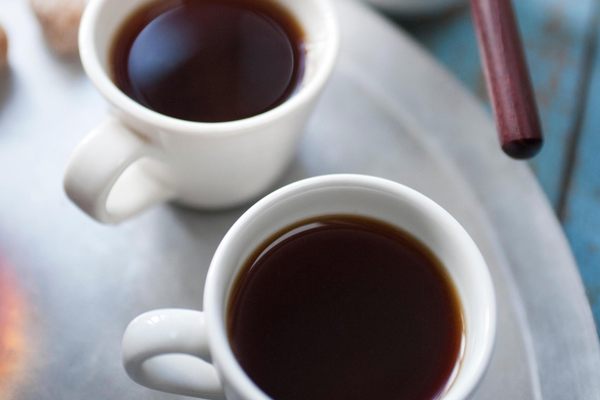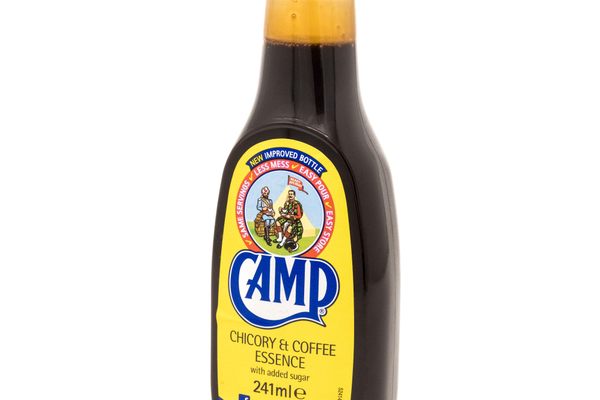Drinks
Pure Kona Coffee
Grown only on the volcanic soil of Hawaiʻi’s Big Island, this coffee is known for its subtle, rich flavor and hordes of unscrupulous imitators.
Imitators beware. In light of the legions of Kona-coffee wannabes peddling false promises, a group of genuine Kona coffee growers recently banded together to sue several big-box stores, such as Walmart and Costco, for their role in a massive coffee fraud scheme. The crime? Passing off mediocre beans as Kona coffee. Grown only on the volcanic soils of Hawaiʻi’s Big Island (also named Hawaiʻi), Kona coffee is lauded by connoisseurs for its deep, “winey, spicy” flavor, and lack of a bitter aftertaste.
Not all Hawaiian coffee is Kona. To qualify, the beans must be grown in the “Kona Coffee Belt,” a 22-mile-long, two-mile-wide strip of land that sits at a 700- to 2,400-foot elevation. This land, on the slopes of the Hualalai and Mauna Loa volcanoes, is a patchwork of family-owned coffee groves. The island’s climate is perfect for the trees, which require both sunshine and rain during the August to January growing season, and long periods of sun during drying. From January to late May, the Hawaiian hills fill with delicate white blossoms. Then, from May to August, the coffee trees’ taut, green fruits, called cherries, ripen in bunches throughout the season until they’re a bright scarlet. Producers periodically hand-pick the cherries, which don’t all ripen at the same time. Then, they remove the pulp, ferment the inner pits, and sun-dry the seeds on large, sunny decks known as hoshidanas. They’re raked occasionally to ensure they dry evenly, then finally roasted.
Kona coffee producers reflect Hawaiʻi’s rich, multiethnic history, and the vitality of its contemporary local enterprises. Samuel Ruggles, a missionary, first brought coffee to Hawaiʻi from Brazil in the 19th century. At that time, Hawaiʻi’s coffee farms were run by wealthy plantation owners, who lorded over large parcels of land. Following a global downturn in the coffee market in the 1890s, however, many of these big plantations were broken up. Smaller, scrappier family farms, often owned and run by Japanese immigrants, cropped up in their place. Today, Kona coffee is farmed by around 600 small growers.
Kona’s smooth, rich taste has long inspired fans. In an 1866 letter, Mark Twain wrote that “Kona coffee has a richer flavor than any other, be it grown where it may and call it what name you please.” Today, the lust for genuine Kona coffee has led to some egregious imposters. While Kona farmers produce only 2.7 million pounds of beans a year, more than 20 million pounds of Kona-labeled coffee are sold each year. Some of this discrepancy can be accounted for by the presence of blends between Kona and other, less-pricey coffees, a way to cut costs while still delivering some of the rich Kona flavor. Yet new chemical testing methods, designed to check for compounds found only in genuine Kona coffee, have revealed that many of the so-called Kona blends actually contain no real Kona coffee. Experienced Kona drinkers can often taste the fraud, and coffee aficionados would do well to pay a premium for the real experience; not only for the taste, but to support a legacy of small, local growers that stretches back over a century.
Where to Try It
-
Hula Daddy Plantation Tours and Tastings Website
74-4944 Mamalahoa Highway, Holualoa, Hawaiʻi, 96725, United StatesThis award-winning Kona coffee plantation offers tastings (free, no appointment necessary) and tours (by reservation).
-
Kona Coffee Living History Farm Website
82-6199 Mamalahoa Hwy, Hwy 11, Captain Cook, Hawai'i, 96750, United StatesStroll through the grounds of a historic Kona coffee farm, with a genuine antique mill
Written By
 Reina Gattuso
Reina Gattuso
















